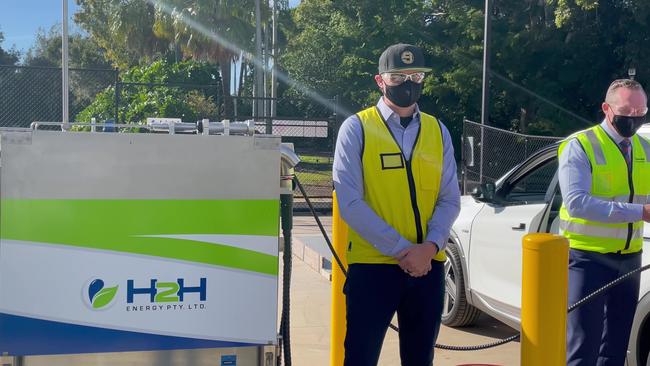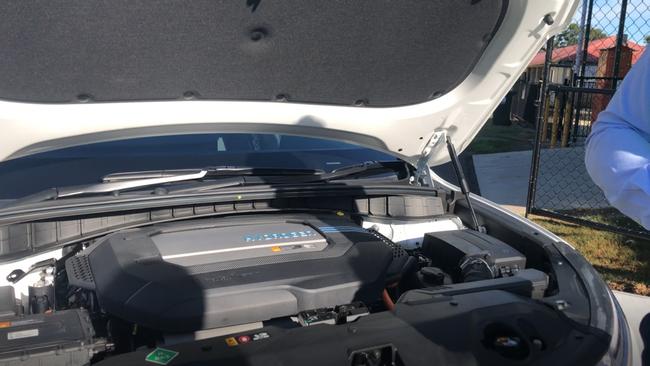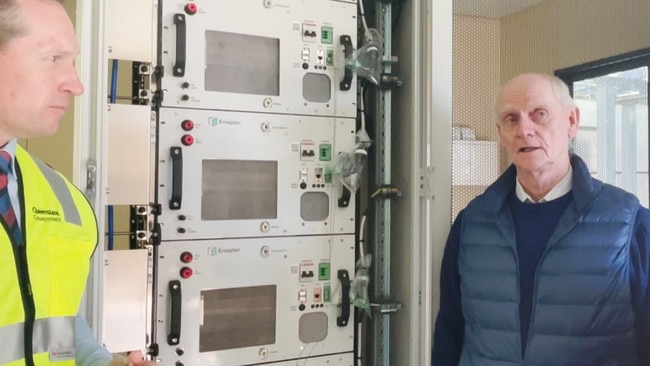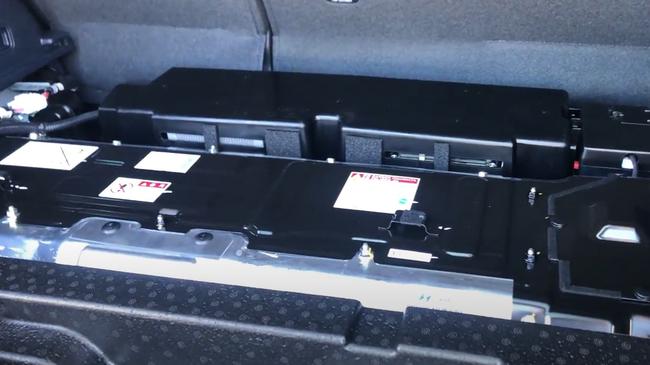Sunshine state powers on with hydrogen car refuelling station
The state’s first hydrogen refuelling station has opened in Redlands, with a hydrogen car getting a tank of fuel made from Queensland sunshine.
Redlands Coast
Don't miss out on the headlines from Redlands Coast. Followed categories will be added to My News.
The state’s first pilot hydrogen refuelling station opened in Redlands today with one of the state’s first hydrogen cars getting a tank of fuel made from Queensland sunshine.
The Hyundai Nexo SUV is one of five hydrogen-fuelled vehicles added to the state’s fleet of 60 zero-emission cars with a further 84 on their way.
The fuelling station, a large metallic box with a bowser hose linked to large hydrogen cylinders, is one of three in Australia with others in Canberra and Victoria.

Sunshine Coast business H2H Energy built the bowser at the Department of Agriculture’s Redlands research facility, which is also a base for researchers from Queensland University of Technology.
QUT scientists said it would be only a few years before the state started exporting hydrogen for fuel, but there were also grand plans for batteries and cars to be built in Queensland.
The hydrogen car costs about 13 cents a kilometre to run, equivalent to a petrol car with Hyundai setting a recent record driving the Nexo 880km, further than its average range of about 660km.
The boot of the car has three 2kg cylinders, with the hydrogen from the tanks mixing with oxygen to create the electricity for the car’s engine, which is at the front under the bonnet.
Hydrogen Minister Mick de Brenni said the energy and cost statistics would improve as inroads were made into refining the emerging technology.

“The technology with the state government’s partnering, means we are grabbing the very best hydrogen technology from all over the world and bringing it here,” he said.
“The more hydrogen we are able to see into the supply chain through vehicles such as this, the more we can continue to expand renewable energy.
“Queensland has what it takes to produce renewable hydrogen at scale, which is why we’re investing in new technology as part of our COVID-19 economic recovery plan.”
Initially, the biggest winners in the transport industry would be large freight vehicles such as trains and trucks, which would be able to use renewable energy without having to pack massive, heavy batteries.
But the state would partner with the federal government and investors to provide incentives to motorists to buy the new technology when it is rolled out on a large scale.
A state hydrogen and renewables incentives policy was also being drafted to get consumers interested in hydrogen cars, which have no carbon emissions and only one by-product — water.

The rollout is expected to speed up this year after the Australian Renewable Energy Agency, known as Arena, supported investment in hydrogen at universities such as QUT.
QUT’s Institute for Future Environments executive director Professor Ian Mackinnon said South Korea was already ramping up plans to build 80,000 hydrogen cars a year by 2023.
“That will definitely help to bring down the price, which will fuel demand” he said.

“But for Australia, the big issue at the moment is how many refuelling stations can we put in at the right time with appropriate safety regulations.”
The grand plans for the hydrogen industry in Queensland would not stop at cars with Professor Mackinnon said Queensland had the smarts, technology and resources to build the refuelling stations, along with tapping the hydrogen for export.
He said hydrogen refuelling stations would be built along the state’s electric super highway with the rollout taking less than two years.
QUT Vice-Chancellor Professor Margaret Sheil said the university said QUT would be leading the way to produce renewable hydrogen to refuel hydrogen cars.





